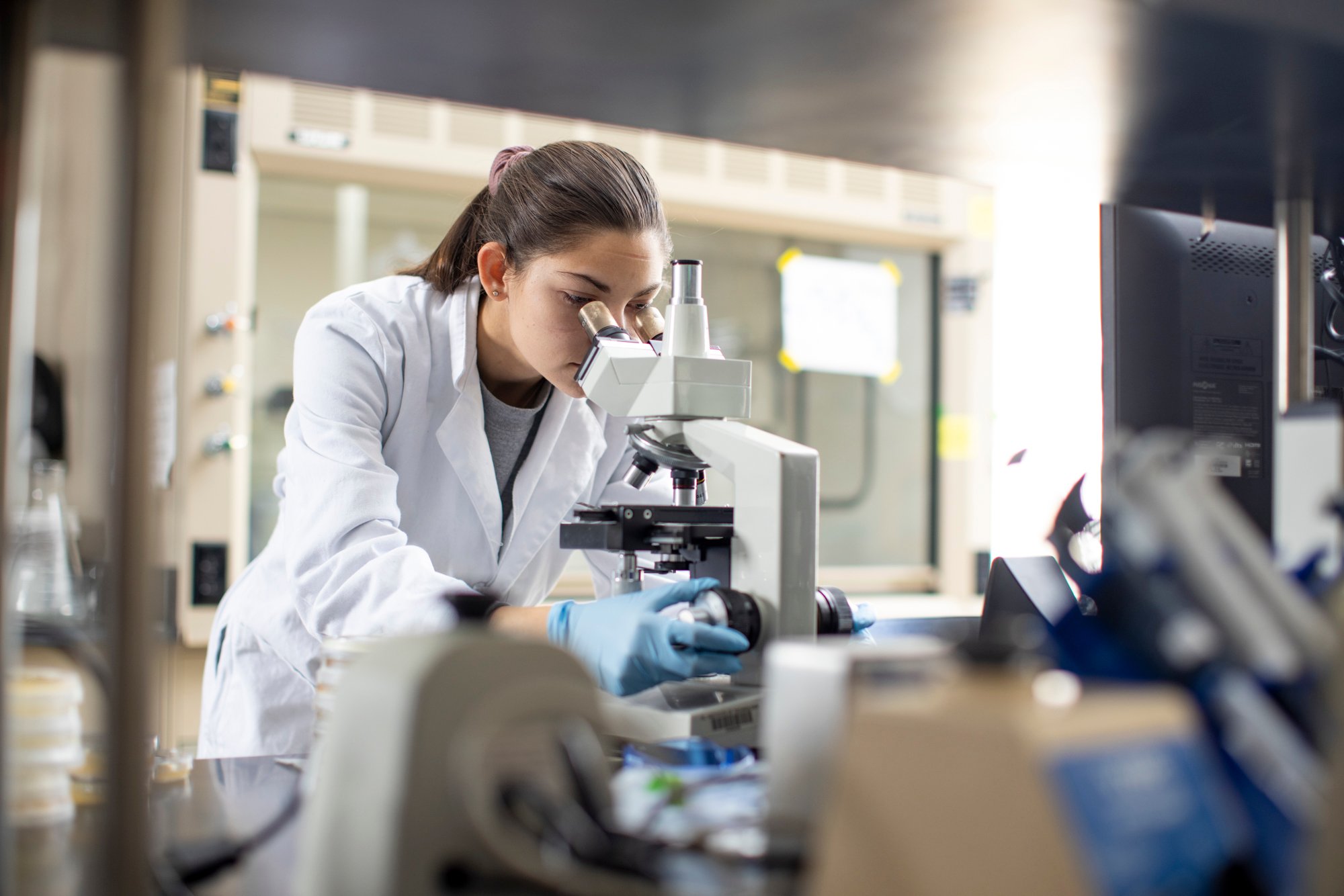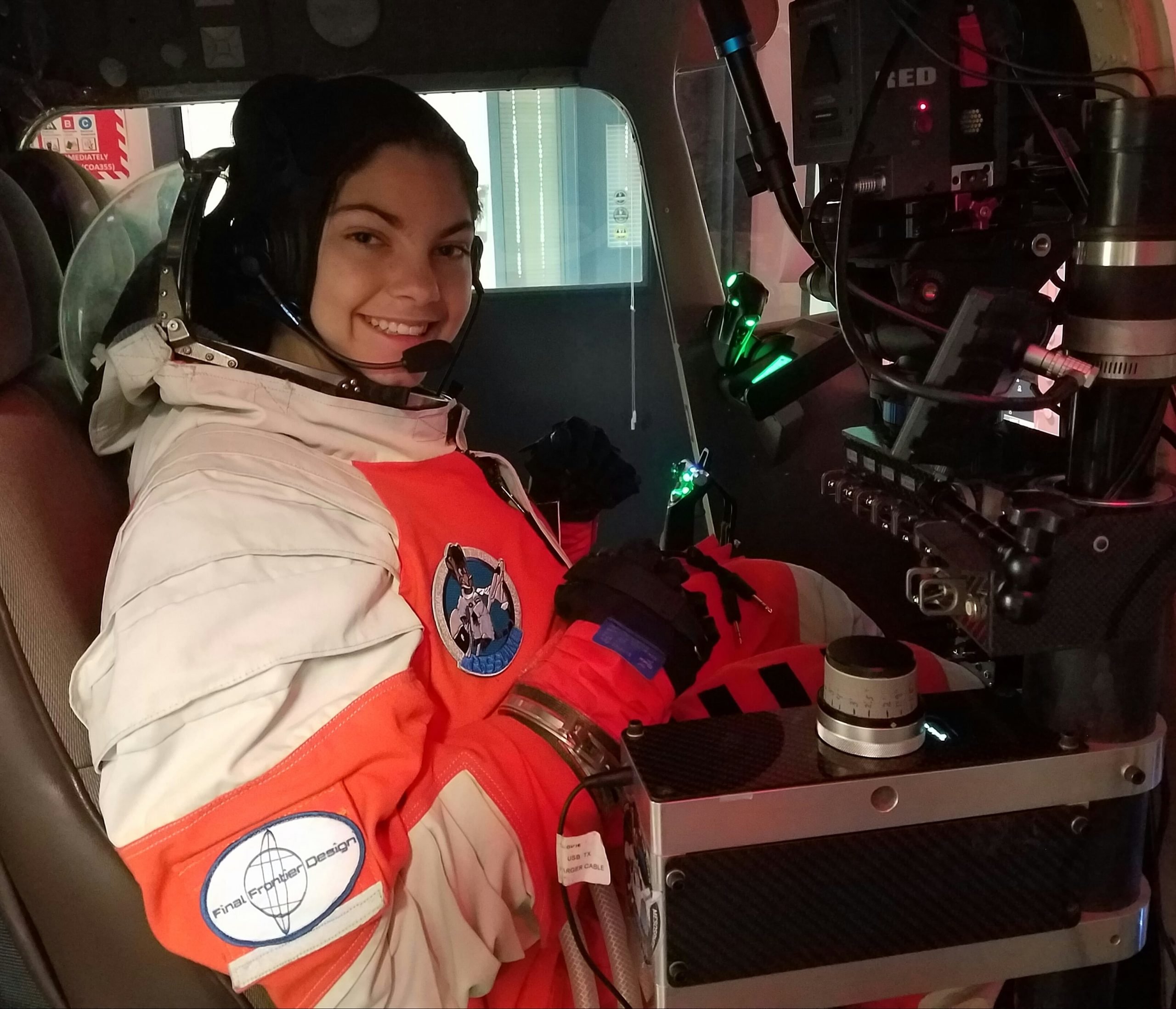Alyssa Carson is an Astrobiology major with a rocket license. She’s doing Astrophysics homework at the Florida Institute of Technology and visiting the launch drill of the NASA SLS Artemis I rocket next week (the official launch is set for November 12). She is in the process of filling out grad school applications and curating educational and engaging content for her over half a million Instagram followers of @nasablueberry. She is 21 and the face of the Mars Generation.
“I think of myself as Hannah Montana with the best of both worlds,” Alyssa tells Cherwell. She has one foot in and one foot out of this world. Like so many of us in our final year of undergraduate studies, Alyssa is busy building her resume – only the job application is directed to NASA’s next call for astronauts.
Alyssa smiles at the “Astronaut in Training” title commonly given to her on the internet and in the media. The term is not an official designation as it may appear but an indication of Alyssa’s groundbreaking work positioning her to be included in the crews of the first Mars missions. At only 12 years old, Alyssa sat on the NASA Mer (Mars Exploration Rover) 10 panel to discuss future missions to Mars in 2030. By nineteen, she was an aquanaut, skydiver, pilot, fluent in four languages (English, French, Spanish, and Mandarin), and the youngest person to graduate from the Advanced Space Academy located at the U.S. Space & Rocket Center. Last year, Alyssa received her certification in applied astronautics from Project PoSSUM (Polar Suborbital Science in the Upper Mesosphere), a space and science research organization, that certifies her to do a suborbital research flight. In addition to her impressive flight and diving certifications, Alyssa is the author of two books, So You Want to be an Astronaut? (2018) and Ready for Liftoff: Becoming an Astronaut of the Mars Generation (2022), a partner of brands such as Louis Vuitton, Bvlgari, and Alpha Industries on space-inspired fashion, and a global speaker at TED conferences.
So how do you become an astronaut? It turns out that one of the best ways is studying what you love. Alyssa balances her professional obligations – “the NASA blueberry calendar” (a reference to her social media username) – with being a college student. She chose her major of Astrobiology because she enjoys that the course incorporates various scientific disciplines: “Planetary Formation” has Astrophysics components while “Origin of Life” deals mostly with Biology and “Core Components of Life” is heavily based in Chemistry. For Alyssa, course work isn’t isolated to classroom experience; she draws upon her mental toughness acquired from years of pushing herself past her physical limits to motivate her through all-nighters for tests too. Alyssa laughs, “The first time I jumped out by myself when I was getting my skydiving license, we had to completely go around the jumping off point because I was so scared. With big goals [from doing well on a microbiology assignment to becoming an astronaut], it helps to break things into smaller goals to tackle them.”

One of these goals is making STEM study and research a more inclusive space. While Alyssa enjoyed her courses and appreciated her professors’ insights, she noted the “inevitable drop-off” of women in STEM over the course of her studies. She is currently an advocate for increased representation of people of all backgrounds in STEM. When Alyssa started at Florida Tech, the class composition was approximately “70% male students to 30% female students. It was intimidating and silencing when I was a freshman starting out in Astrobiology and I was one of two girls in almost all my classes.”
Through her platforms on Instagram and TikTok, Alyssa is working to boost intellectual curiosity among people of all backgrounds from an early age. She keeps her followers updated on all things extraterrestrial – from interesting discoveries she’s made in an Astrobiology lab at university to fashion and educational partnerships that show the multifaceted ways people can participate in and get excited about space exploration. A more recent post alerted followers to her latest series with Varsity Tutors entitled “The Search for Alien Life” where Alyssa conducts an interactive class answering such questions as how to look for and where to find life forms in space.
“STEM needs more attention. There are big words, it can get complicated very fast. You can study Astrophysics but then it’s like – okay, what does that mean? What does Astrophysics look like as a career? The next step is to show kids what these jobs look like: Are you working in a lab? Are you working on a laptop studying data? When people of all backgrounds can envision themselves passionate about the work, they may seek avenues at a young age to get involved in the work.” Like the rest of her student cohort in the Mars Generation (a group of teenagers gathered at NASA’s space camp determined to have their boots be the first on the red planet), Alyssa knows the mission to Mars hinges on public interest as the moon landing did in the 1960s. Alyssa’s social media accounts make abstruse scientific subjects more accessible. The information she shares appeals to youth who might not necessarily follow the latest breakthroughs in extraterrestrial discoveries, and her compelling content also increase enthusiasm for space adventure.
“I’ve never had an interest in being a content creator or influencer. I was essentially just posting cool things I did and hoped people would find them interesting, too. It’s just to show people that you can do anything you set your mind to at a young age – essentially, that space is an attainable goal.” When Alyssa shares the launch drill of Artemis I, she gives her followers an inside look at NASA’s first test of deep space explorations systems with the Orion Spacecraft. The new space travel vehicle is designed to go farther than humans have ever traveled, with the ultimate goal of putting humans in Mars.

Alyssa says that she wrote her books because unlike pre-professional paths such as becoming a lawyer or a doctor, there is no Astronaut School graduate option. “I like to think of [becoming an astronaut] as more of a destination – somewhere that you can perform a job. You have to go to school and study some form of profession to be able to become an astronaut. And there’s no right or wrong way to do it.” But Alyssa gravitates towards real life experience in both academic and extracurricular activities. Not only did Project PoSSUM allow her to get experience with the mental and physical toughness of space exploration at a young age, but she loves her current Astrophysics professor because he gives “very real-world experience.” Even though Astrophysics is not Alyssa’s main area of interest, learning about stellar evolution and looking at high resolution photos of star nurseries is one more step to placing a person on Mars.
Since beginning her studies at Florida Tech, Alyssa has witnessed an uptick of female students in her classes. A recent study by the Integrated Postsecondary Education Data System (IPEDS) found that in 2020 women represented 45% of students majoring in STEM fields, up from 40% in 2010 and 34% in 1994. And the trend is increasing. For her own part, Alyssa received the Florida Institute of Technology’s Student Catalyst Award celebrating her work to increase women’s participation and development in the school community this past academic year. She says that there is clearly more work that needs to be done, but she is proud of the improvements at her university.
To the Oxford students who are looking ahead and trying to figure out what to do with their lives, Alyssa tells us not to be afraid of our dreams that seem out of reach – or out of this world. “When I was a kid, saying I wanted to go to Mars, sounded very unrealistic. The more I’ve worked toward it, the more it’s becoming a reality.”
Staring unflinchingly into galaxies far away, Alyssa looks forward to the commercialization of space because it presents positive competition to the national space exploration projects. “After the Space Shuttle Program ended [in 2011], many saw space as kind of closed. It’s been exciting over the past couple years to see the commercialization of space.” This is particularly relevant considering Russia’s recent withdrawal from the International Space Station. In addition, China’s announcement of its three moon-mining missions raises questions as to whether the moon may be the next geopolitical frontier. Russia and China both have yet to sign the Artemis Accords, a NASA-sponsored bilateral agreement between the United States and the governments of 21 other countries to support the American-led effort of putting humans on the moon in 2025, with the ultimate goal of expanding space exploration to Mars. Given the increased politicization of space and NASA’s plan to deorbit the International Space Station by 2030, Alyssa believes it is up to the next generation of astronauts to view putting humans on Mars – whether through a company or governmental organization – as humanity’s accomplishment.
For Alyssa, reaching for the stars – no matter what your profession – is a no brainer. “We just have to push to make it happen.”


